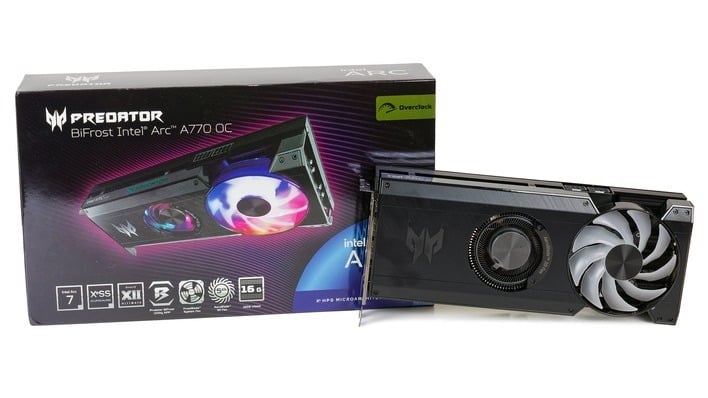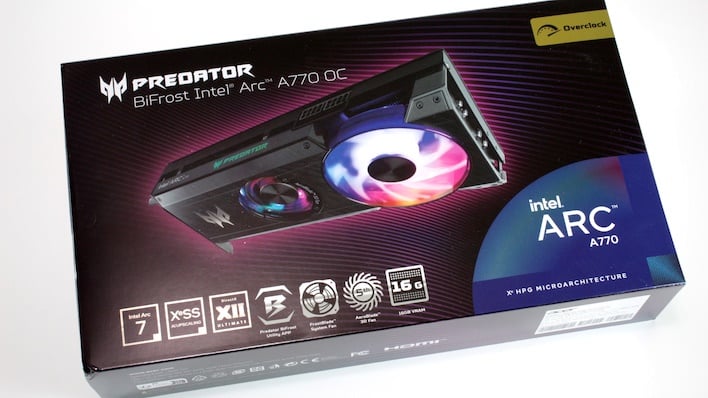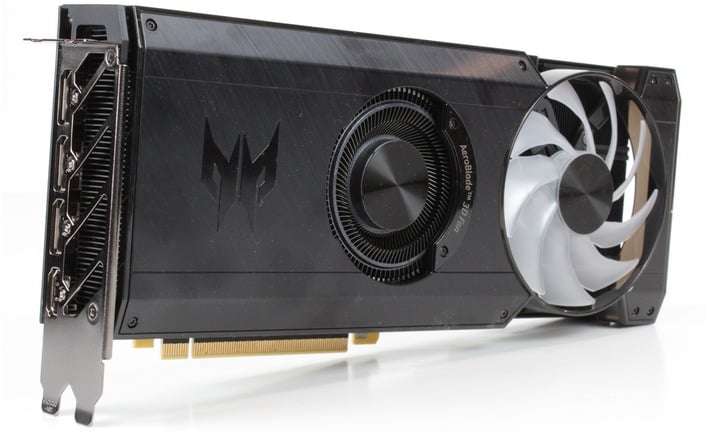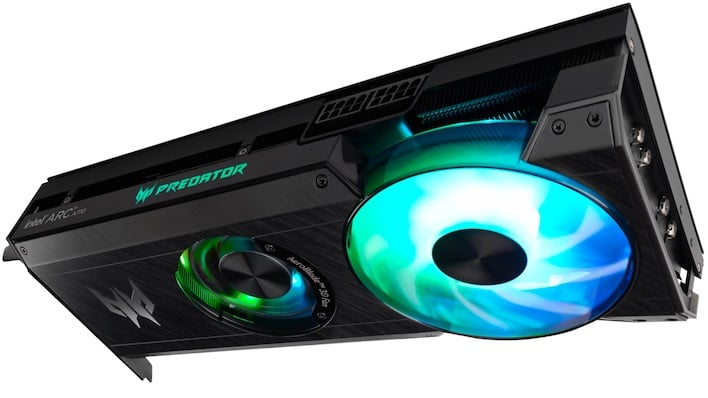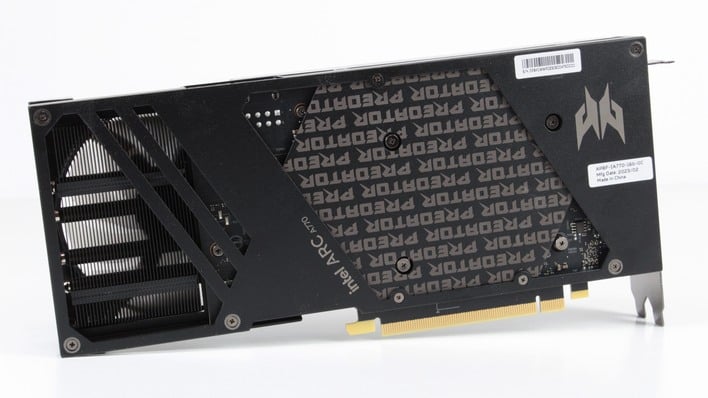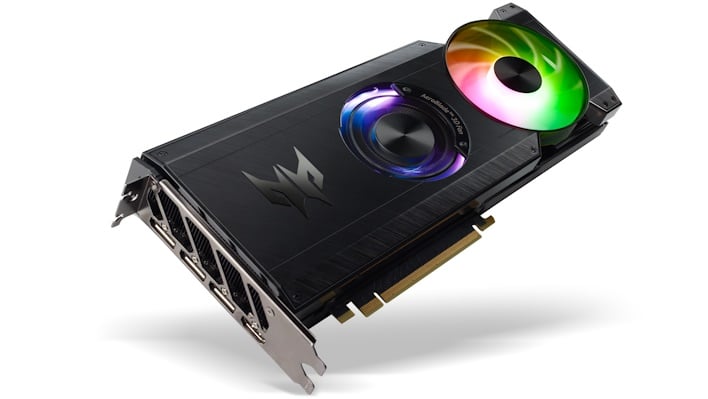Acer Predator BiFrost Arc A770 OC Graphics Card Review: Intel On-Board
Acer's Predator BiFrost Arc A770 OC Is A Fine Example Of Intel's Top GPU
| Acer Predator BiFrost Arc A770 OC 16GB: MSRP - $399; Street Price - $319 (As Low As $289) Acer's take on Intel's Arc A770 GPU is the fastest and flashiest Arc card around, and you won't pay a premium for it when it's on-sale -- which is often.
|
|||

|

|
||
It probably doesn't need to be re-stated to an audience of hardware enthusiasts, but Intel's Arc GPUs didn't set the world ablaze when they landed. While the hardware was clearly capable, the drivers were still in the early stages, and performance was inconsistent depending on the application and API at play. We've been meaning to go back and re-test Arc against its competitors for a while now, and have snuck in some updated numbers in some recent reviews, but haven't done a standalone feature with an Arc GPU.
When Acer offered to send over one of its Predator BiFrost A770 OC cards, however, it gave us the perfect opportunity to revisit Arc and see how things are going a year out from launch. That's right: it's already been a year since the A770 and A750 launched last October. Time sure flies, doesn't it?
We'd like to excitedly tell you that all of Arc's issues are resolved and that this Acer card is an incredible gaming value, but that'd be getting ahead of ourselves. First, let's talk about the card itself and its specifications.
Acer's Predator BiFrost Arc A770 OC is based on Intel's Arc A770 product that is itself based on the ACM-G10 GPU. This is the largest "Alchemist" GPU, and it's also used in the Arc A750, albeit in cut-down form. Looking at the specifications, it has impressive numbers: 4,096 shaders, 128 ROPs, and a 256-bit memory bus giving it 560 GB/second of memory bandwidth. For perspective, let's look at a few competing GPUs in this handy chart:
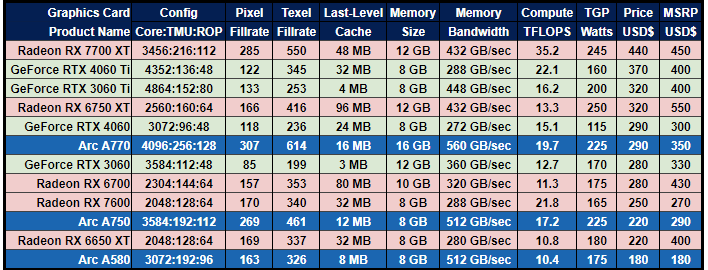
If you haven't read our earlier coverage of Intel's Arc GPUs, you should probably do that to get an idea of how things have changed. This review won't include benchmark data for earlier driver versions because we're trying to get an idea of how Arc, and specifically this Predator BiFrost Arc A770 card, compares to other options available in the market. However, we did recently do a short post with some tests of the original release driver against a much newer driver. Here's a few links to our earlier coverage that provide some additional background detail:
Intel Arc A770 And A750 Limited Edition Review: Putting Alchemist To The Test
Arc Graphics Updates And PresentMon Tested: Intel Makes Huge Strides
The Acer Predator BiFrost Arc A770 OC
So, about the Predator BiFrost itself. The look of the card is certainly distinctive. It has what looks like a classical blower shroud, intended to vent heat out the back side of the case, but then at the end of the board, there's a large axial fan that vents air through the backside of the card toward the CPU cooler. It's an interesting design, and we're not completely sold on the cooling benefits, but it certainly looks flashy.
While we're discussing the design, we should mention that RGB LED lighting is present in both the axial fan as well as the squirrel cage in the middle of the card. Presumably this dual-fan setup is what inspires the "BiFrost" name.
On the top of the card, you have the Intel Arc A770 branding as well as some RGB LEDs that illuminate a Predator logo when the card is on; you can see those in the rendered image above. The Predator BiFrost Arc A770 takes a pair of eight-pin power connectors giving it some 375W total of available power, but that should be gross overkill for a card of this power level. It's possible that Acer intended users to have some headroom for overclocking, which we'll talk about much later.
Around the back of the card, you have a partial backplate that bears the Predator monster head logo as well as the Intel Arc A770 branding, and then another backplate behind that one that protects the rear of the GPU. Overall the design looks complicated and we suspect it would be cheaper to simply manufacture a single aluminum plate, but we do have to admit it looks pretty wild.
Most of the card's rear case bracket is taken up by fan vents for the centrifugal blower that directs air toward both the vents and the axial fan at the rear of the card, that ejects air upward (in a traditional tower case). The output cluster on the Predator BiFrost A770 is the same triple-DisplayPort-plus-one-HDMI cluster that we see on most modern GPUs, so full marks for available ports, but no points for originality.
Overall the card is a nice, reasonable size, well within acceptable bounds, and much smaller than many recent GPUs. It doesn't stick up too far above the expansion card backplate, and it doesn't have backward-facing PCIe power connectors, a pet peeve of mine. We don't really have any complaints with the construction of the card, but taking it apart to re-paste it seems like it could be a challenge, as the design of the cooler is quite complicated.
You're not just here to gawp at the thing, though, are you? Let's start looking at some charts and numbers.

